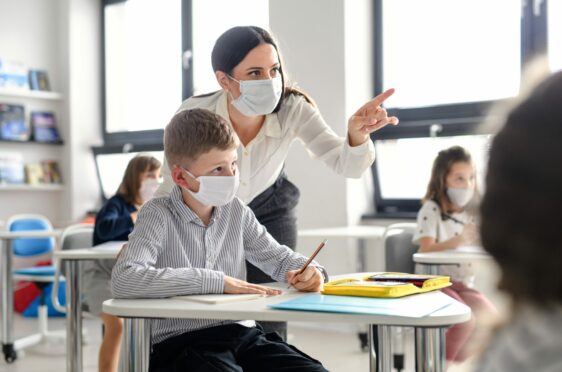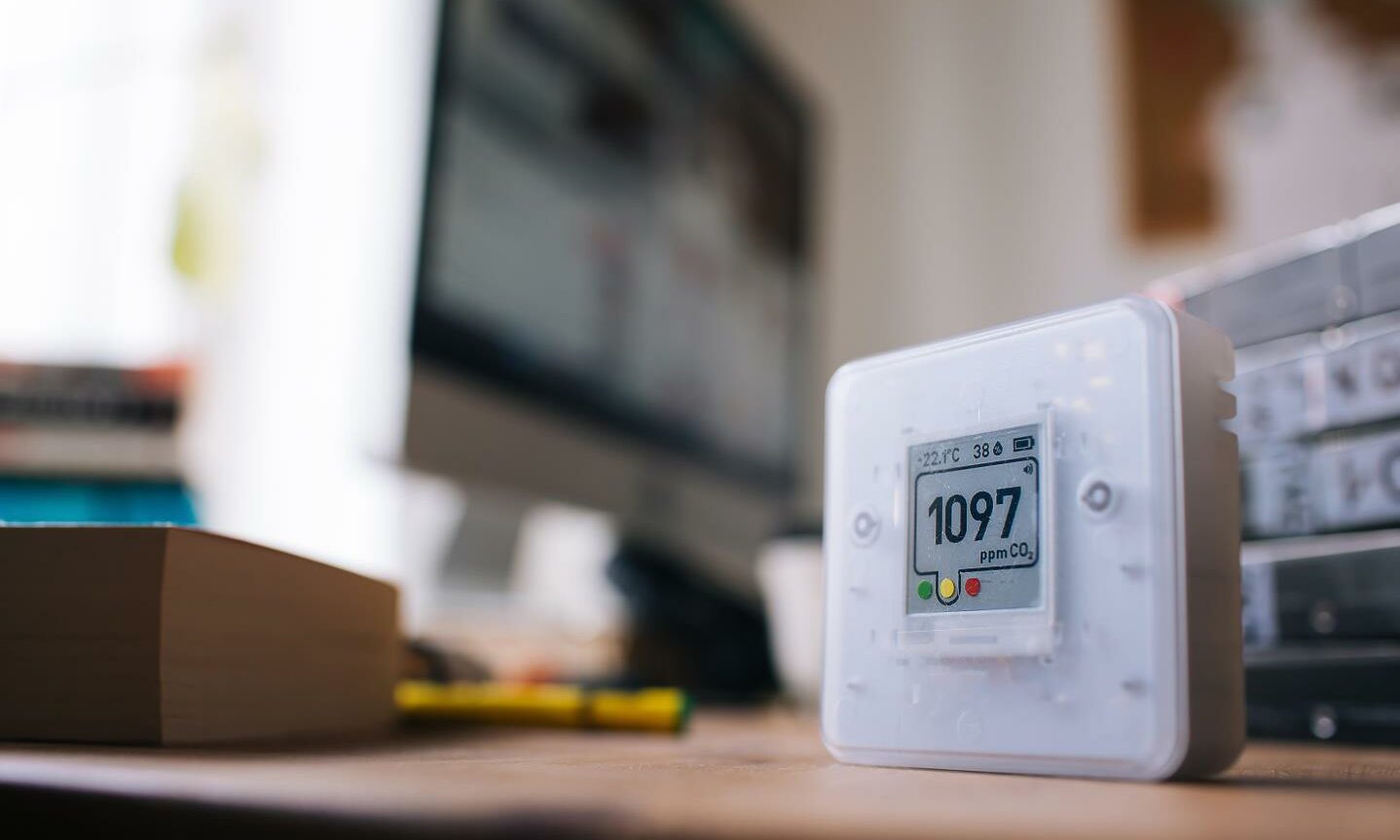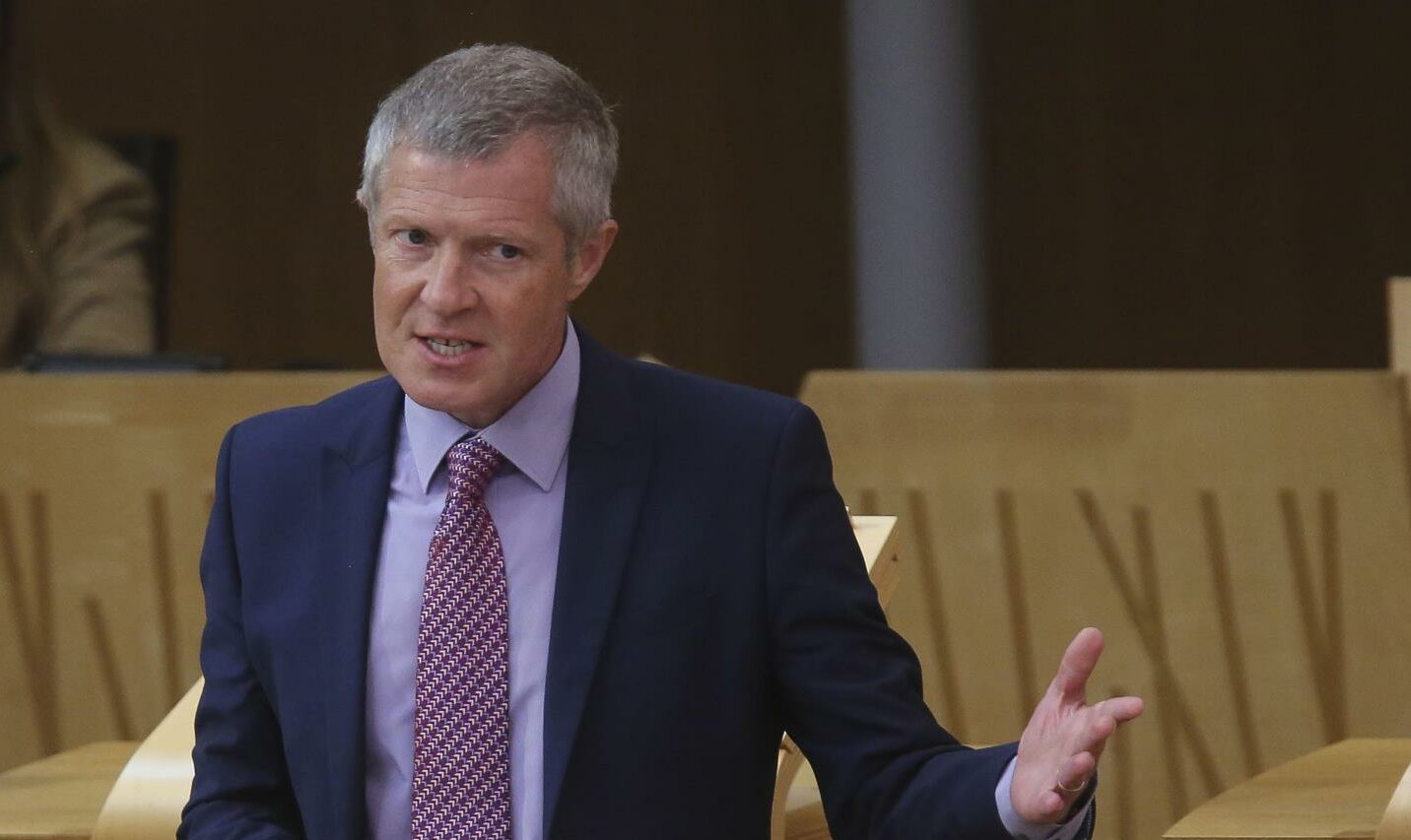SNP rivals and teaching unions have demanded improved Covid safety measures in schools as children and teachers return to class.
Youngsters went back to classrooms following the Christmas break despite virus cases surging due to the Omicron variant.
It’s been claimed the Scottish Government must do more to enhance ventilation and testing in schools to stem the spread of the bug.
Nicola Sturgeon said during her Covid briefing on Wednesday that it was her “priority” to keep schools open – but admitted the next few weeks could be “challenging”.
MSPs held a virtual meeting with parliament closed while classrooms filled with pupils and teachers.
New changes to testing rules mean youngsters will no longer need to self-isolate if they test negative for Covid even if their parents catch the virus.
‘Ventilation in schools must be improved’
The EIS teaching union said the government must be “led by the science” and claimed they should not rule out complete shutdowns.
Meanwhile, Scottish Labour claimed the SNP had a “poor record” on ventilation in schools and said disruption to education had been “disastrous”.
The Greens also said improved airflow in classrooms is a must – with many teachers being forced to open windows despite cold winter temperatures.
It’s estimated up to one in 20 people in Scotland could currently be infected with Covid at the moment as the highly transmissible variant rips through the country.
The Scottish Government must be led by the science.”
EIS spokesperson
An EIS spokesperson said: “There is a clear need for strong mitigations with enhanced cleaning regimes, improvements in ventilation, and the continuation of other measures such as use of face coverings and physical distancing measures.
“The Scottish Government and local authorities must be led by the science. If that necessitates schools moving to remote learning for a period, then that is a step they must not be afraid to take.”
Labour education spokesman Michael Marra, a North East MSP, said: “From their poor record on ventilation to the collapse in school testing numbers, it’s clear not enough has been done to keep schools safe and open in the face of Omicron.
Education disruption has been disastrous.”
Michael Marra MSP
“Two years into the pandemic and schools are still facing the toughest of circumstances, let down continuously by poor leadership in Scottish education.
“Attainment statistics show us that the education disruption has been disastrous for young people.”
Meanwhile, Scottish Greens health spokeswoman Gillian Mackay said: “Staff and parents are understandably concerned about the impact of the Omicron strain.
“Many teachers will be opening windows to ensure adequate ventilation. With temperatures close to freezing, this is not a viable option.
“Some of the funding allocated to support measures could be used to allow Scotland’s councils to purchase air filtration units for classrooms that require them.
“This would provide some reassurance for teachers and a better learning environment for pupils that are likely to see disruptions due to absences anyway.”
In November an investigation by The Courier revealed how many Covid air quality monitors school across Tayside and Fife had been given.
CO2 trackers were dished out to teachers to let them know when more fresh air is needed to prevent build-ups of airborne droplets which can be infectious.
At the time a government spokesperson said improved ventilation would help reduce Covid transmission in classrooms.
But a spokesperson from the NASUWT teaching union claimed the Covid monitors will not do enough to improve ventilation as they urged officials to install air filters
‘The Scottish Government must invest in air filtration units’
They said: “Whilst some efforts have been made to assess air quality through the installation of CO2 monitors in many schools, the action taken to address poor air quality and ventilation remains little more than ‘open a window’.
“In temperatures like today’s, that does not make for a suitable learning environment and is one reason why NASUWT are calling on the Scottish Government to invest in air filtration units in classrooms.”
Lib Dem education spokesman Willie Rennie, MSP for North East Fife, said: “Political and education leaders must listen to teachers and respond with improvements, especially regarding classroom ventilation.
“Our schools must have mechanical ventilation to help keep schools open and safe. Young people deserve that investment considering the price they have paid through the course of the pandemic.”
The Scottish Government said they were introducing “enhanced protections” as the new term begins, with £10million in funding for councils to improve airflow in classes.
A spokesperson said: “We know this is a concerning time and we will continue to closely monitor the situation and keep the schools safety guidance under regular review, while focusing on minimising further disruption to learning.
“Our guidance for return to school includes a number of enhanced protections, including approaches to CO2 monitoring and ensuring good levels of ventilation are maintained, backed by £10million of additional funding to local authorities to complete initial CO2 assessments of all learning, teaching and play spaces in their schools.”


